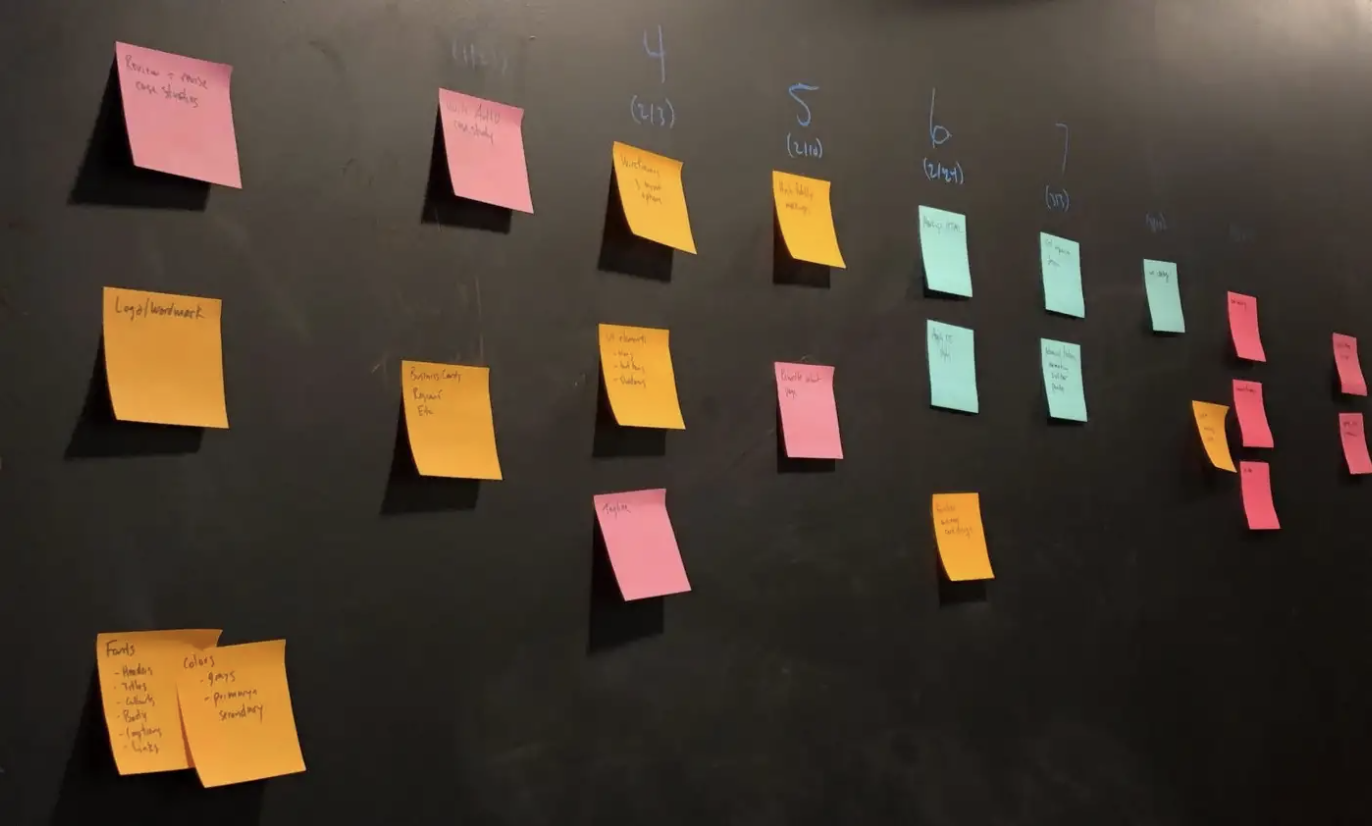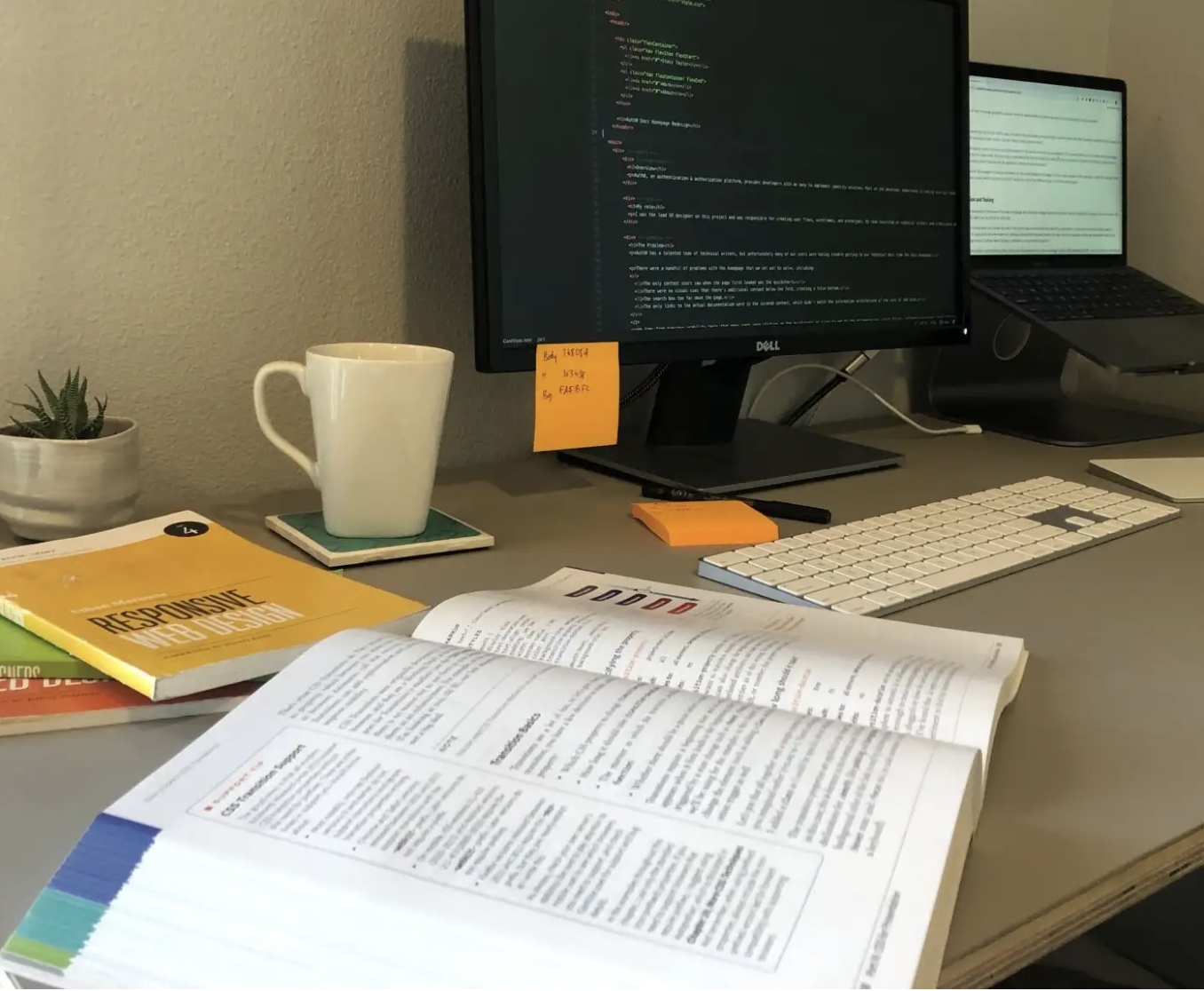I’m over overly optimistic New Year’s Resolutions. Nobody sticks to them for more than a week or two anyway.
This year, instead of resolving to suddenly change all of my bad habits overnight, I decided to focus on developing my skills. I have a whole list of things I want to get better at someday (don’t we all?) and I resolved to actually make progress on them this year, starting with frontend code.
So I decided to redesign my portfolio, and code the whole thing by hand. And unlike so many past resolutions, this time I actually did it.
Why am I doing this to myself?
I asked myself that question more than once throughout the process. In case you’re blissfully unaware, a portfolio redesign is a lot of work. So why’d I decide to take on this task?
I had three main reasons:
-
To move from using a website builder to something I had more control over. Sorry, Squarespace. It’s not you; it’s me.
-
To get more practice with HTML and CSS. I’ve dabbled with front end code at various points in my life, but it’s been awhile and a lot has changed. I wanted to try out new developments like Flexbox and Grid. Hand coding my portfolio would force me to learn and give me a place to experiment.
-
To keep my portfolio up-to-date. Like a lot of people, I have a tendency to ignore my portfolio until I’m actively job-hunting, at which point I scramble to throw something together in a hurry. I wanted to end that cycle.
Sticky notes = productivity, right?
I set myself a plan. I read books about code. I covered my wall with sticky notes. I assigned different colors to different areas of the project (content, design, code, and deployment) and arranged them by date.

They fell off the wall. I fell behind. It’s hard to carve out time for personal projects while also working full time.
But! I had a hard deadline. My Squarespace site was set to renew on April 16, and I knew if I didn’t have something finished by then I’d put it off for another year. And I’d be out $144. That kept me at least somewhat accountable.
Starting is the hardest part
By late February I’d done a lot of reading, a bit of designing, and zero coding. I had a pretty good idea of what I wanted to do, but actually opening my code editor and doing it seemed like a monumental task.
I had a friend who was also working on her portfolio, and we were theoretically keeping each other on track. In practice we were mostly meeting up to grab a beer and vaguely talk about what we had (or hadn’t) accomplished.
One afternoon when we met up I showed her a Codepen project I liked, then copied the code into Atom and started playing around with it. We both ended up spending hours copying and pasting random bits of code we found online and seeing what happened. The results were terrible and not fit for human consumption, but the experience helped me realize that I didn’t have to know exactly what I was doing before I started coding. I could create something terrible, learn from it, and then toss it out and try again.

I spent the next month trying different ideas, redesigning, recoding, and figuring out what I could accomplish with my existing skills and tools. I set up a Github repository and figured out how to use version control. More than once I threw out everything I’d done and started from scratch. There were days I feared I wouldn’t meet my deadline. But in mid-April, just before my Squarespace site expired, I launched my new portfolio.
Minimum Viable Portfolio
The end result is…pretty decent. But it’s not perfect. There were ideas I abandoned because I couldn’t figure out how to make them work by my deadline. The layout isn’t particularly groundbreaking. The code is pretty basic. I’m already dreading how hard it’s going to be to make updates. But you know what? I learned a lot.
I learned what’s changed in HTML and CSS since I last dabbled in it. I learned how to use Github and Atom. I learned how to change my DNS settings to redirect my domain. I learned what I need to learn to do the things I can’t do yet. But mostly, I learned that learning is messy and that’s ok.
So yeah, my current portfolio may not be perfect. I’ll probably redesign it again in a year — maybe less. But I have my own little corner of the internet that I can do whatever I want with. I can play and experiment and grow my skills. I can showcase my accomplishments, I can break things, and I can burn it all to the ground and start over if I want. And I think that’s pretty rad.
Originally published on Medium